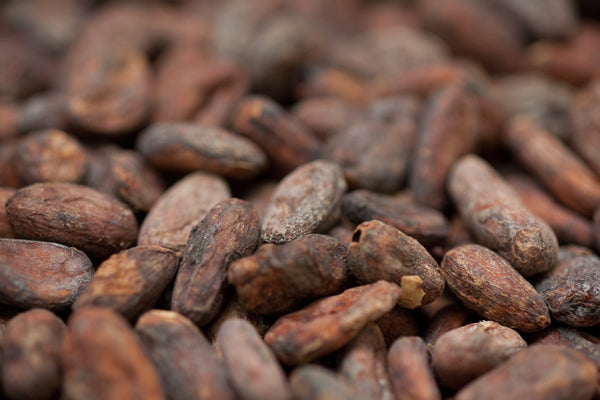how we make chocolate
1 start with the best raw ingredients

Only three ingredients enter our chocolate: cocoa beans, cane sugar, and cocoa butter. We slowly drum-roast cocoa beans for each chocolate batch, releasing the cocoa's unique flavors. Cocoa's character changes dramatically with different roasts - we publish cocoa roast levels on each bar for comparison.
r o a s t l e v e l s
Roasting is essential to chocolate flavor development - each cocoa variety has its own unique range of flavors. Different roasting levels can coax these flavors from the cocoa. A "perfect" roast is subjective and personal. Roasting levels include:
light - just enough to soften raw cocoa's acidic or green edge
medium - cocoa flavors develop to be balanced and flavorful
dark - full bodied, bold, intense, new flavor notes can develop while others may be subdued
Visit our uniquely fresco page for more about cocoa roasting
2 create remarkable chocolate recipes

Cocoa percentage (%) is the ratio of cocoa nibs and cocoa butter to sugar. Sugar must enhance, not over power cocoa flavors. Added cocoa butter makes the chocolate smooth and velvety - too much will dilute the cocoa's natural flavors. Changes to any of these variables can produce astonishingly different chocolate flavors.
3 stone grind and conche using age-old methods

Solid granite rollers grind beans and sugar hour after hour as in ages past. Next, heat, motion and aeration over time will develop each chocolate's unique flavor: This is conching. Changing the duration or temperature of this step will produce dramatically different chocolate flavors - we publish conche levels on each bar for your comparison.
c o n c h e l e v e l s:
none - primitive, natural, pungent, not appropriate for all cocoa, exquisite for some
subtle - softens primitive edge while retaining aggressive flavor notes
medium - balance between aggressive and subdued, mellow
long - flavor peaks and valleys softened to a melodic harmony
4 temper, mold and finish each bar

Molten chocolate is heated and cooled to allow the natural development of cocoa butter crystals. This is tempering. Tempered, molten chocolate is pumped into bar molds and cooled until solid, then wrapped and labeled. Tempering is responsible for the sheen, snap, and proper melting in the mouth when tasting - which should be vigorously pursued as often as possible.
